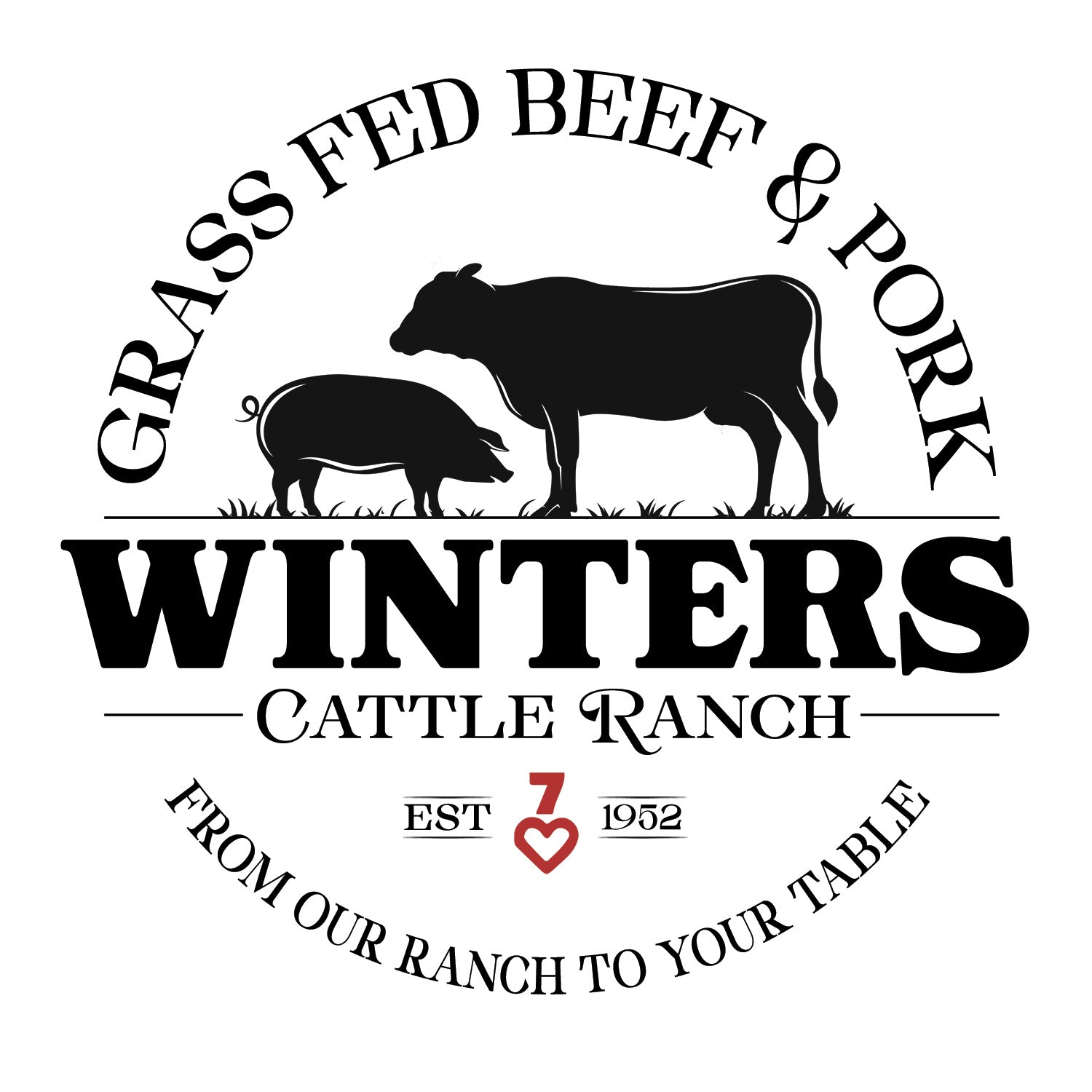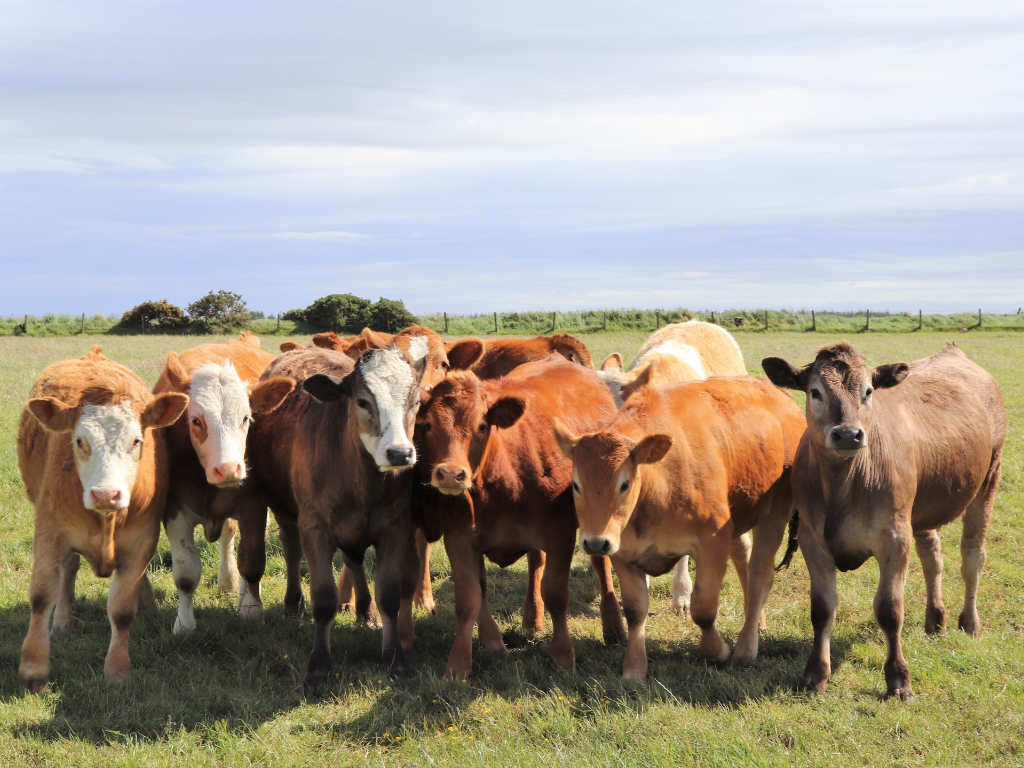Beef is a staple in many Colorado homes, from sizzling backyard barbecues to hearty family dinners. But as more consumers become conscious of where their food comes from, a new question has emerged: What exactly is the difference between grass-fed beef and regular beef?
This isn’t just about flavor, it’s about nutrition, sustainability, and supporting responsible farming practices that impact your health and the environment. Understanding these differences can help you make better, more informed choices when buying your next steak, roast, or bulk beef order from trusted Colorado producers like Winters Ranch Meats Inc..
Let’s break down everything you need to know.
Grass-Fed Beef
Grass-fed beef comes from cattle that primarily eat grass and forage throughout their lives. These animals graze in open pastures, feeding on natural vegetation instead of grain-based feed.
This type of diet mirrors how cattle were meant to eat, resulting in meat that is leaner, richer in nutrients, and more environmentally friendly. Grass-fed beef is often associated with smaller-scale farms that prioritize animal welfare and land stewardship, making it a popular choice among health-conscious and eco-aware consumers.
What Is Regular (Grain-Fed) Beef?
Regular beef, often called grain-fed or conventional beef, typically comes from cattle that start on pasture but are later finished on a diet of corn, soy, and other grains in feedlots. This process, known as “grain finishing,” helps the cattle gain weight faster and develop the marbling (fat content) many people associate with tenderness and flavor.
While this results in a more consistent texture and milder taste, the nutritional profile differs from that of grass-fed beef. Grain-fed beef may contain more total fat and fewer beneficial fatty acids.
Nutrition: Why Grass-Fed Beef Is Considered Healthier
When comparing grass-fed beef to regular beef, nutrition is one of the most significant differences.
Higher Omega-3s and Healthy Fats
Grass-fed beef has up to five times more omega-3 fatty acids than grain-fed beef. These are the “good fats” that support heart health, reduce inflammation, and improve brain function.
More Antioxidants and Vitamins
Cattle that graze on grass consume a natural diet rich in vitamin E, beta-carotene, and other antioxidants. As a result, their meat contains higher concentrations of these nutrients, which help protect your cells and support immune health.
Lower in Unhealthy Fat
Because grass-fed cattle move more and eat a leaner diet, the beef they produce tends to have less total fat, and therefore fewer calories, than regular beef. This makes it a great choice for anyone focusing on balanced, clean eating.
Flavor and Texture: Nature vs. Consistency
The taste and texture of beef are heavily influenced by what the cattle eat.
Grass-Fed Beef
Grass-fed beef typically has a richer, more complex flavor that some describe as “earthy” or “robust.” The meat is leaner, so it can have a slightly firmer texture. Many chefs and home cooks appreciate this natural, authentic flavor that reflects the animal’s diet and lifestyle.
Regular Beef
Grain-fed beef, on the other hand, tends to be more tender and buttery due to its higher fat content. This marbling makes it easier to cook evenly and gives it a familiar taste most people associate with restaurant steaks.
If you’re new to grass-fed beef, you may need to adjust your cooking method slightly, lower heat and slower cooking can help maintain tenderness and bring out its natural flavor.
Farming Practices and Sustainability
Grass-Fed Farming
Grass-fed operations, such as those in Colorado’s open ranges, typically emphasize sustainable and humane practices. Cattle graze freely, which helps regenerate pastures, reduce soil erosion, and encourage biodiversity.
These farms often use rotational grazing systems, allowing the land time to recover between cycles. This approach benefits both the environment and the animals’ health.
Conventional Feedlot Systems
Grain-fed cattle are often raised in confined feedlots, where they consume grain-based diets to gain weight quickly. While efficient for large-scale production, these systems can contribute to environmental challenges, including water pollution and greenhouse gas emissions.
By supporting local grass-fed beef producers, consumers contribute to a more sustainable food ecosystem that respects both the land and the livestock.
Cost Differences: Why Grass-Fed Beef Costs More
Grass-fed beef usually comes with a higher price tag, and here’s why:
-
Longer Growth Period: Cattle raised on grass grow at a slower pace than grain-fed cattle.
-
More Land and Labor: Pasture-based farming requires more space and time for grazing management.
-
Higher Standards: Many grass-fed operations adhere to strict standards for animal welfare and sustainable practices.
While the upfront cost might be higher, many consumers view it as an investment in quality, health, and environmental responsibility.
Local Impact: Supporting Colorado Ranchers
Choosing grass-fed beef in Colorado is also a way to support local ranchers and family-owned farms. The state’s vast open pastures and clean mountain environment make it ideal for raising grass-fed cattle.
When you buy locally, you reduce the carbon footprint associated with transportation and ensure that your dollars stay within your community. Colorado ranchers like Winters Ranch Meats Inc. take pride in raising cattle responsibly, offering premium beef that reflects the state’s rich agricultural tradition.
Health Benefits Beyond the Plate
Beyond being delicious and nutritious, grass-fed beef offers health benefits that extend beyond simple protein intake:
-
Improved Heart Health: Thanks to higher omega-3 and CLA (conjugated linoleic acid) levels.
-
Stronger Immunity: More antioxidants and vitamins support immune function.
-
Better Blood Sugar Control: Leaner beef and lower unhealthy fat levels can aid metabolic balance.
-
Allergen-Friendly: Grass-fed beef is often preferred by people who avoid grains or have sensitivities related to feedlot-finished meat.
For health-conscious Coloradans, grass-fed beef represents a wholesome, clean source of protein that aligns with an active, outdoor lifestyle.
Cooking Tips for Grass-Fed Beef
Because grass-fed beef is leaner, it requires slightly different handling to maximize tenderness and flavor.
Here are a few expert tips:
-
Cook on medium or low heat to avoid over-drying the meat.
-
Use marinades or butter to enhance moisture and flavor.
-
Allow the beef to rest after cooking so juices redistribute evenly.
-
For roasts or bulk cuts, slow cooking or sous vide methods deliver exceptional tenderness.
You can explore high-quality, dry-aged beef cuts from Colorado producers through options like Dry Aged Black Angus Grass-Fed Whole Beef, Dry Aged Grass-Fed Black Angus Half Beef, or Beef Bulk Collections for the best farm-to-freezer experience.
Environmental and Ethical Considerations
Grass-fed systems are often better for the planet. By letting cattle graze naturally, ranchers can reduce the need for synthetic fertilizers, pesticides, and grain production, all of which have environmental costs.
This approach supports carbon sequestration, helps restore soil health, and reduces dependence on industrial feedlot systems. In short, it promotes a closed-loop ecosystem where the land, animals, and people benefit together.
Ethically, grass-fed beef supports better animal welfare. Cattle live freely, with access to pasture, sunshine, and fresh air, conditions that align with humane ranching standards.
Why Colorado Is Perfect for Grass-Fed Beef
Colorado’s geography and climate make it one of the best places in the United States for grass-fed cattle. The mix of sunshine, open plains, and clean water creates ideal grazing conditions.
Ranchers in regions like Colorado Springs and beyond maintain a long-standing tradition of raising cattle the right way, without shortcuts or artificial feeds. This local approach not only preserves Colorado’s ranching heritage but also ensures consumers have access to some of the finest beef in the country.
Understanding the difference between grass-fed beef and regular beef is about more than just diet; it’s about values, sustainability, and flavor.
Grass-fed beef provides superior nutrition, supports ethical ranching, and celebrates the natural balance between land and livestock. For Colorado residents, choosing local grass-fed beef means embracing a tradition of quality and care that benefits your family and your community.
So, the next time you plan a meal, think beyond the grocery store shelf. Choose grass-fed. Choose local. Choose Winters Ranch Meats Inc., where Colorado’s proud ranching heritage meets exceptional taste and uncompromising quality.
Bringing Your Family’s Mealtime Goals to Life Starts Here
At Winters Ranch Meats Inc., grass-fed beef is more than a product; it’s a promise of quality, flavor, and responsible ranching. Their cattle graze on natural pastures in Colorado Springs, ensuring every cut delivers authentic taste and nutrition.
Whether you’re looking to fill your freezer with farm-fresh sides or try a perfectly aged Angus roast, Winters Ranch Meats Inc. makes the process simple and rewarding. Stock your kitchen with beef that’s naturally raised, expertly butchered, and delivered right to your door.
Contact us today! Winters Ranch Meats Inc., Colorado Springs, CO, USA. Visit their website at https://winterscattleranch.com/ to learn more about their premium offerings and bulk order options.

